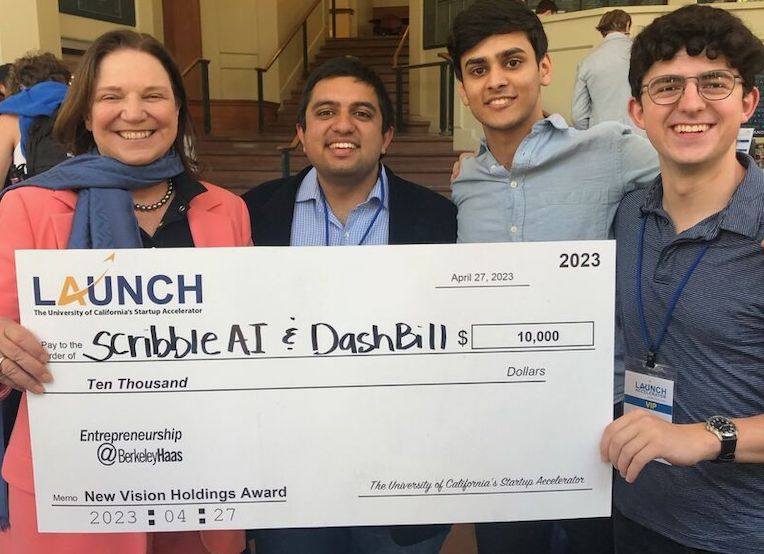Topic: Entrepreneurship
CEE unicorn visionaries: Who are the founders behind $1B+ startup legends?
GWF Team Travel 2023
The need to embrace change: How to integrate cottage industries for inclusive development

This spring, I embarked on an in-depth study of the captivating realm of cottage industries around the world. I was driven by my desire to understand how cottage industries can be integrated into a country’s economic development. Take the example of India as a developing country. As India shifts from a largely agrarian to an industry-driven economy, it will face formidable challenges. The crux of addressing this transformation lies in understanding and effectively managing the process, attentively considering the heterogeneous necessities and historical legacies of the populace, rather than resorting to mere mechanization of traditional industries.
Surprisingly, about 60% of India’s population relies on agriculture as their primary source of livelihood, particularly in rural enclaves. As the economy develops, India must address the question of what is next for agrarian workers. In this context, cottage industries or handicrafts emerge as indispensable facets, exemplified by the exquisite hand-knotted rugs handcrafted by artisans in Jaipur. These industries serve as crucial pillars, supporting the livelihoods of myriad Indians, with an estimated 200 million individuals (equivalent to the entire population of Brazil!) deriving their sustenance from the intricate tapestry of cottage industries. Consequently, the pressing inquiry emerges: How can these industries be seamlessly assimilated into the future trajectory of economic growth without merely advocating for wholesale mechanization?
Preserving the essence
The beauty of cottage industries lies in their traditional methods. They bring a unique characteristic and value to their products that can’t be replicated through modern means. Imagine a painting made by a machine versus one crafted by a passionate artist. The artist’s creativity and personal touch make it priceless. So, as we look to the future, we must find ways to preserve and uplift these traditional skills and values.
Boosting productivity and modernization
To integrate cottage industries into the speed of the modern economy, we need to focus on enhancing productivity and modernizing certain aspects of these industries. Often, traditional processes lack certain efficiency and modernization elements that can assist in better integration with modern markets. By leveraging technology and innovative processes, we can eliminate unnecessary manual labor and allow artisans to focus on the activities that truly add value. This shift can transform the way work is done, positively impacting everyday tasks and income generation.
Streamlining the value chain
Let’s not forget the importance of the entire value chain in this integration process. Many cottage industries face challenges in terms of inefficient systems that hinder their products from reaching the right places. By creating avenues that deploy modern business practices, we can revolutionize the way these industries operate. Imagine more professional and passionate individuals working to solve these pressing problems. Together, we can unlock the full potential of cottage industries and pave the way for inclusive development.
Embracing change for a better future
In a rapidly changing world, we must avoid creating a social imbalance by merely mechanizing cottage industries. Instead, let’s focus on integrating them into new business models and approaches that consider the preservation of traditional value while embracing productivity enhancements and modernization. By doing so, we can foster a balanced and inclusive economic development in India.
A dynamic journey
Let’s remember that the journey towards progress and development is a dynamic one. It requires us to find ways to embrace change while honoring the rich heritage of our cottage industries. Through innovative thinking, skillful integration, and a passionate commitment to inclusive development, we can build a future where cottage industries thrive, traditional skills are valued, and social imbalance is avoided. Together, let’s pave the way for a brighter and more sustainable world!
Read the full research paper:
For-Profit Social Entrepreneurship for Art and Craft Ecosystems in India
Reflections from Ghana
Digital Entrepreneurship: Navigating the Maze Leading to Success
8 books you must read for career growth
A chameleon chooses blue-and-gold as his colors
FlowGPT cofounder on his visionary AI project that’s speeding ahead in the AI market
Startup: FlowGPT
Co-founders: Lifan Wang, MBA 22, and Jay Dang, a former UC Berkeley Computer Science major

In this interview, Lifan Wang discusses how he met his FlowGPT co-founder, Jay Dang, at UC Berkeley, and why speed was critical for his startup in entering the AI market.
How did you come up with the idea for FlowGPT?
We started this project in January. We both were power users of ChatGPT when it first came out. We would spend around 10 hours a day exploring different use cases of ChatGPT prompts and trying to leverage AI to increase our productivity. As we used it more, we realized that there are so many more use cases that people haven’t discovered. So we started doing extensive research by talking to people who use ChatGPT and prompts. We talked with approximately 100 people from various online communities, such as Discord channels and found that people constantly post and share ChatGPT prompts with each other, which gave us the idea to create a dedicated platform for prompt creators to share their prompts.
How did you get started in entrepreneurship at Haas?
Haas is a great place for aspiring entrepreneurs. I’ve taken several entrepreneurship classes, including a class with Rhonda Shrader, executive director of the Berkeley Haas Entrepreneurship Program, that helped me understand the process of launching a startup — from searching for ideas to conducting user research to creating a prototype.
Haas is a great place for aspiring entrepreneurs.
In the Business of AI, taught by Pieter Abbeel, a renowned professor in the engineering school, I interacted with generative AI and learned about neural networks and the GAN (Generative Adversarial Network), which pits two different deep learning models against each other in a game. I also explored various technical imaging technologies. I firmly believe that AI, especially generative AI, is going to be a significant trend that will revolutionize the world.
Where did you meet your co-founder?
Jay and I met during our time at UC Berkeley SkyDeck, where we attended various events. Jay was seeking funding for his startup in his freshman year. As a part-time venture partner, I was interested in potential investment opportunities. He pitched me his startup, which connected to the work I had previously done in the industry. We had extensive discussions and got to know each other well.
Are you both seeking funding right now?
We secured our C round of funding in May and are currently preparing to launch a new funding round this month or next. Our user base has experienced robust growth, and based on the data we’ve gathered, now is the perfect time to accelerate expansion.
What are some of your concerns about the future of AI or its impact on work and society?
With every technological advancement, there are inherent risks. When computers were introduced, illegal activities emerged on websites and regulations evolved. Our aim is to empower people to be more productive and generate a positive impact while prioritizing safety. We must ensure the safe use of AI, which will become a powerful tool, similar to the internet and software. Many people are already leveraging new AI tools like ChatGPT and Prompt Engineering to increase their productivity. At FlowGPT, we use ChatGPT daily for coding, product management, messaging, and marketing, covering various aspects of our operations. AI represents the next generation of powerful tools that elevate human productivity to new heights.
Our aim is to empower people to be more productive and generate a positive impact while prioritizing safety.
Do you have any advice for aspiring entrepreneurs?
Execution is crucial. That is the most important thing I learned from Jay, my co-founder.
We launched the product in January, just one and a half months after ChatGPT’s release. Unlike many competitors, who were still in the ideation stage, we were already ahead. When competitors attempted to imitate us, we had already iterated three times and gained a million users.
My advice is to start building right away. You don’t have to be an expert at product development to get started. During my time at Cal, I noticed many people getting stuck in the same phase. Some might say, “I’ve got all the business plans figured out, and all I need is one programmer to build the product.” However, as time passed, they were still searching for programmers. The ability to launch is crucial, especially in the initial stages.
‘The melting pot of ideas keeps us here’: Why sports nutrition maker GU calls Berkeley home
Pet trainer Spivak sets up success
Case study: Talea Beer
Starbird CEO talks trends in chicken sandwiches, salads, wings. Has spicy run its course?
3 California universities are in the top 10 for churning out startup founders who have gotten funding since 2022
Should people with grit ever give up?
Three childhood friends now run Napa Valley’s premiere music festival
Eurie Kim, BS 01 – Being Authentically Yourself is the Real “Representation”
‘My finger tips have not evolved for this kind of change’: Hot Pockets remove crisping sleeve from packaging
Startup Spotlight: Download Scribble AI to write content faster than ever

Jayaditya Sethi, BS 24 (double major in business and computer science), along with Sahil Mehta, BS 23, (Business & Electrical Engineering/Computer Science) and Ethan Jagoda, BS 24, (computer science), founded Scribble AI, an AI startup that placed third in the recent UC Berkeley LAUNCH accelerator pitch day. The startup is also part of the Batch 16 startup cohort at the UC Berkeley SkyDeck accelerator. We recently asked Sethi, who will be a software engineering intern at PayPal this summer, five questions about Scribble AI. (Download the app here.)
Tell us what ScribbleAI is and how people use it?
Scribble AI is a simple mobile interface people can download that uses AI to effortlessly create customized written content live on iOS and Android phones. It can be used to generate emails, poems, tweets and everything in between across 12 different languages and 20+ style customizations.
What is your favorite way to use ChatGPT (an artificial intelligence chatbot developed by OpenAI)?
Our favorite use for ChatGPT is for debugging code as this was crucial for us to launch the app within two weeks without any prior mobile development experience.
How did you meet your co-founders Ethan and Sahil?
We have been close friends since starting at UC Berkeley. Sahil and Ethan met through the startup accelerator and consulting club Entrepreneurs@Berkeley. Ethan and I met through a class and are now roommates. We have all collaborated on previous projects, such as being part of Entrepreneurs@Berkeley leadership and co-founding a music club together.
What is the most important takeaway from participating in LAUNCH?
Our biggest takeaway from LAUNCH was to constantly challenge our assumptions about our business. During each workshop, the mentors at LAUNCH questioned our hypotheses about our product and its use cases, helping us find a scalable business model. For example, we learned to find the root causes of a customer’s problem, rather than simply take what a user says at face value. These are lessons we will carry for years as we continue our startup journey!
What are your plans for Scribble AI now?
We plan to scale up traction in international markets, particularly among social media creators who need a tool to write content 10 times faster. We are also developing the premium version of our app, which will be tailored to each user’s specific needs